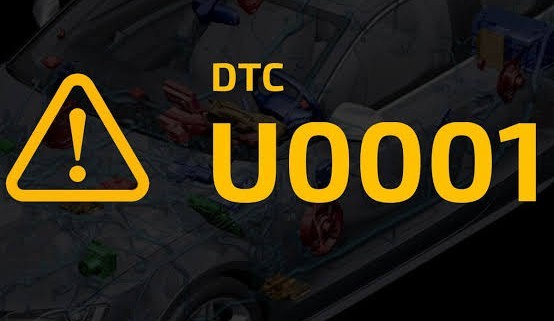If your OBD-II scanner shows a U0001 code, it means that there’s a problem with your high-speed CAN wire (also called CAN high). The CAN bus is a computer network that connects all electronic control units (ECUs) in a vehicle to communicate and share information.
When there is a problem with the high-speed CAN, it can cause problems with communication and collaboration between the ECUs. This can lead to various vehicle issues, such as engine misfires, decreased fuel economy, etc1
In this article, we will explain what causes the U0001 code, what symptoms you may notice, and how to diagnose and fix it. We will also provide some tips and tricks to avoid this code in the future.
What Causes DTC U0001?
Generally, there are only a few reasons why you see this error code pop up on your OBD-II scanner. These include:
- A faulty control module that is causing communication errors
- A problem with the CAN bus connections, such as loose, damaged, or corroded wires or connectors
- A problem with the CAN bus itself, such as a short circuit or an open circuit
- Low battery voltage or a dead battery
Some common factors that can contribute to these causes are:
- Physical damage to the vehicle, such as a collision or vandalism
- Exposure to moisture, dirt, or corrosion
- Improper installation or modification of aftermarket devices or accessories
- Electrical interference from other devices or components
What Symptoms of Code U0001?
Depending on which ECUs are affected by the communication problem, you may notice different symptoms when the U0001 code is present. Some of the common symptoms are:
- An illuminated check engine light
- A secondary code specifying a failed module (always helpful when trying to track down the problem)
- Performance problems ranging from the vehicle not starting to the air conditioning not working, depending on which module is unable to communicate with the rest of the computers in your car’s network.
- Reduced fuel efficiency or increased emissions
- Erratic or abnormal behavior of various systems or features, such as the anti-lock braking system (ABS), the traction control system (TCS), the cruise control system, etc.
How to Diagnose and Repair Code U0001?
Finding the source of this trouble code can be tricky, as U0001 may pop up intermittently or occur due to low battery voltage or a dead battery.
Here’s the step-by-step process that you can follow to diagnose and repair the problem correctly.
- First, clear the code and see if it comes back. If the code does not recur, it may have been caused by a temporary glitch or a low battery. If the code comes back, proceed to the next step.
- Next, make a close visual inspection of the CAN bus and all connections. Check for any obvious issues like broken wires, loose connections, damaged connectors, or signs of corrosion. If you find any problem with the wiring or connectors, repair or replace them as needed and see if the code clears.
- If nothing is found by visual inspection, use a multimeter to test the continuity and resistance of the CAN bus wires. You will need a wiring diagram for your specific vehicle model to identify the correct wires and terminals. You should also disconnect the battery and all control modules before testing to avoid damaging them. The resistance of the CAN bus should be around 60 ohms when measured at both ends of the network. If you find an open circuit or a short circuit in the CAN bus wires, locate and repair the fault and see if the code clears.
- If the CAN bus wires are intact and have proper resistance, you may have a faulty control module that is disrupting the communication. To identify which module is causing the problem, you can use a scan tool that has bidirectional control capabilities. This will allow you to communicate with each module individually and see if they respond properly. You can also check for any other codes that may indicate which module is malfunctioning. Once you find the faulty module, replace it with a new one and see if the code clears.
How to Avoid U0001 Code for Your Vehicle?
To prevent this code from happening again in the future, you should follow some best practices for maintaining your vehicle’s electrical system. These include:
- Keeping your battery in good condition and replacing it when it is old or weak
- Avoiding any physical damage to your vehicle that may affect the wiring or connectors
- Cleaning and protecting your wiring and connectors from moisture, dirt, or corrosion
- Installing or modifying any aftermarket devices or accessories properly and according to manufacturer instructions
- Avoiding any electrical interference from other devices or components that may affect the CAN bus
By following these tips and tricks, you can keep your vehicle’s communication network running smoothly and avoid any problems with the U0001 code.

Comments (0)
Please login to join the discussion
Be the first to comment on this article!
Share your thoughts and start the discussion